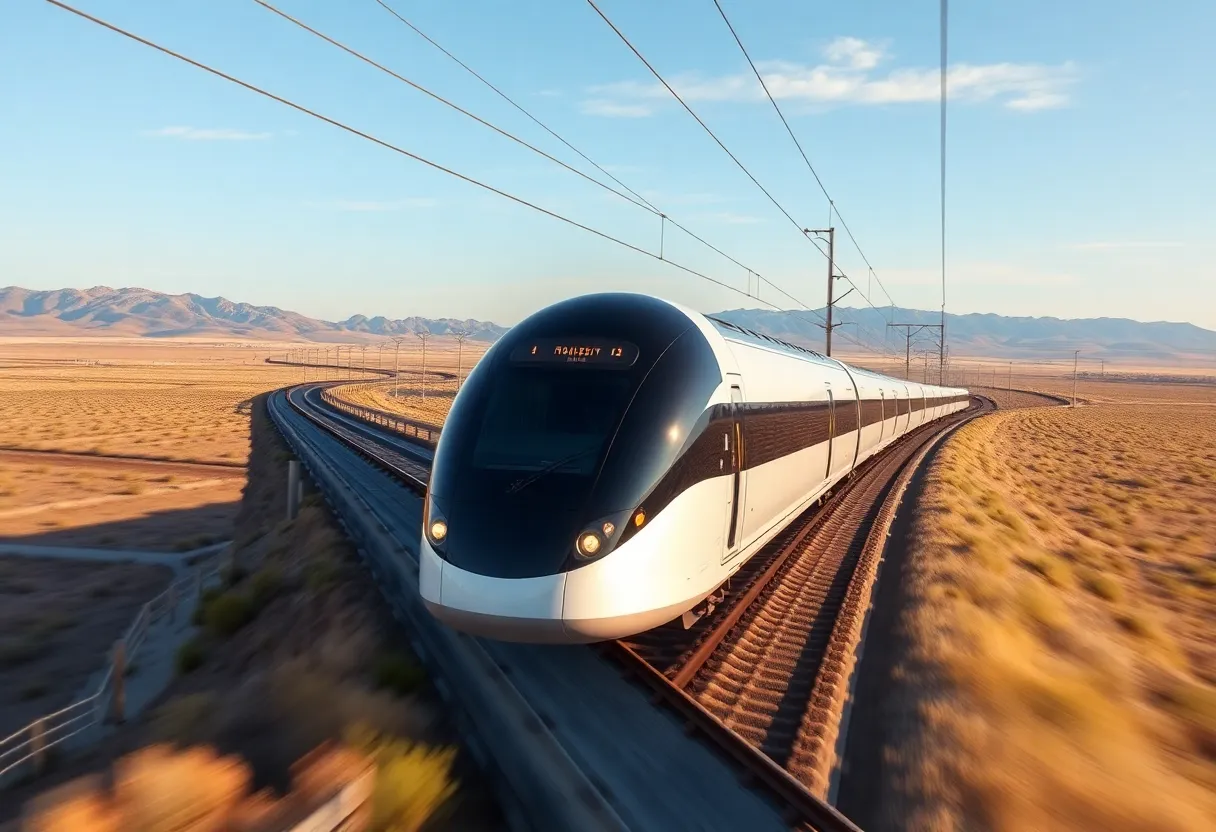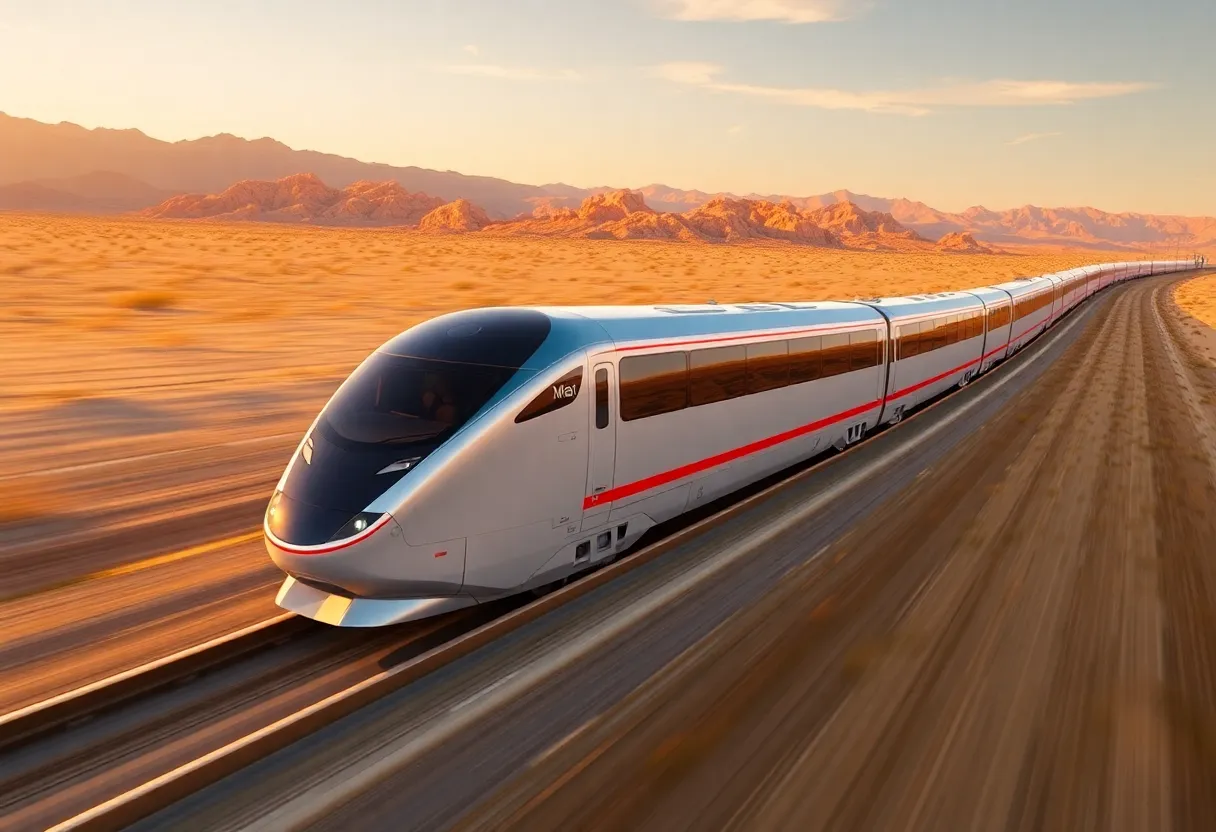News Summary
California’s high-speed rail project has secured $1 billion annually in state funding through 2045, despite facing federal uncertainties and rising costs. This funding, derived from the Cap-and-Invest program, is aimed at advancing the Merced-to-Bakersfield segment while the project undergoes necessary revisions. Challenges persist, including land acquisition and local permits, and while significant job creation has occurred, future expansions remain uncertain without additional investments.
California High-Speed Rail Project Secures State Funding Amid Uncertainties
California’s ambitious high-speed rail project has successfully secured a commitment of $1 billion annually in state funding through 2045, even as it faces challenges related to federal uncertainties and cost overruns. This funding will come from the state’s Cap-and-Invest program, which generates revenue by allowing companies to buy credits to offset greenhouse gas emissions. The total public funding available for the Merced-to-Bakersfield segment alone is nearly $40 billion leading up to 2045, though additional funding is necessary for expansions beyond the Central Valley.
Leadership Changes and Project Revisions
Since taking the helm as CEO of the California High-Speed Rail Authority last year, Ian Choudri has implemented significant leadership changes, integrating expertise from both military and private sectors. In light of the current situation, a complete review of the project has been initiated to explore faster, cost-effective, and financially viable paths forward.
The project roadmap has recently been adjusted following the Trump administration’s withdrawal of federal funding, necessitating a renewed focus on construction set to begin soon in the Central Valley. Construction on a 119-mile stretch between Shafter and Madera initially started over a decade ago, but progress has experienced substantial delays.
Future of High-Speed Rail
Originally, voters approved $9.95 billion in bonds in 2008 to fund a rail line connecting San Francisco and Los Angeles by 2020, with initial estimates of $33 billion for the cost. However, the project scope has evolved considerably, now focusing on the 171-mile line from Merced to Bakersfield, projected to cost $36.75 billion and anticipated to be operational by 2032.
Choudri stated that if various project components are integrated, it may be possible to complete the project by 2039. The authority is preparing to start laying rail tracks next year, actively seeking bids from U.S. manufacturers for the required materials. A 150-acre rail staging yard nearing completion in Kern County will serve as a hub for material deployment for freight trains.
Challenges and Legislative Support
Despite these advancements, the project faces significant hurdles, including difficulties in land acquisition, utility relocation, and obtaining local permits, all of which have contributed to delays and increasing budgets. In response to these challenges, a proposed bill aimed at establishing specialized courts to expedite property-related cases was shelved due to public opposition. Furthermore, a recent report indicated that the revenue generated from the Merced-to-Bakersfield line would likely not cover its operational costs.
Potential for Expansion and Commercial Partnerships
The High-Speed Rail Authority has identified four profitable expansion scenarios, such as connecting Fresno-Madera to Gilroy to facilitate better access to the Bay Area. Additionally, a 2022 California law mandates that the agency prioritize the Merced-to-Bakersfield segment, imposing a $500 million cap on spending outside that focus. In pursuit of partnerships, the agency received 31 responses for expressions of interest in public-private partnerships, which could involve commercializing infrastructure through innovative ideas—like offering freight services on high-speed rail tracks or providing broadband utilities along the right-of-way.
Moreover, the project aims to connect with other existing rail systems, such as Caltrain and Metrolink, and looks towards linking with the upcoming Brightline West system, which aims to connect Southern California and Las Vegas. The ultimate goal is to generate enough revenue to justify further extensions to locations such as San Diego and Sacramento.
Ongoing Impact and Progress
Despite the numerous obstacles that have arisen since its inception, the California high-speed rail project has created over 15,000 jobs thus far. To date, the authority has successfully laid down 70 miles of guideway and erected 57 structures, with an additional 463 miles cleared for future construction. The focus remains on securing ongoing investments to complete significant project segments by 2032, while concurrently addressing persistent financial gaps.
Deeper Dive: News & Info About This Topic
Construction CA Resources
California Supreme Court to Rule on Palm Springs Fund Control
U.S. Withdrawal of High-Speed Rail Funding Impacts California Project
Mayor pushes bridge loan to revive 54-unit Van Ness apartment project
Bakersfield’s California Avenue Set for Major Pavement Rehabilitation
Brightline West Advances High-Speed Rail Link to SoCal
Exodigo Secures $96 Million in Series B Funding for Expansion
Trump Administration Revokes $4 Billion in Funding for California High-Speed Rail Project
Trump Administration Cancels Funding for California High-Speed Rail
Trump Administration Cuts Funding for California High-Speed Rail Project
California Governor Gavin Newsom Revamps Environmental Quality Act
Additional Resources
- Los Angeles Times
- Newsweek
- The Guardian
- Patch
- San Francisco Chronicle
- Wikipedia: High-speed rail in California
- Google Search: California high-speed rail
- Google Scholar: California high-speed rail
- Encyclopedia Britannica: High-speed rail
- Google News: California high-speed rail
Author: Construction CA News
The CALIFORNIA STAFF WRITER represents the experienced team at constructioncanews.com, your go-to source for actionable local news and information in California and beyond. Specializing in "news you can use," we cover essential topics like product reviews for personal and business needs, local business directories, politics, real estate trends, neighborhood insights, and state news affecting the area—with deep expertise drawn from years of dedicated reporting and strong community input, including local press releases and business updates. We deliver top reporting on high-value events such as the Rose Parade, Coachella, Comic-Con, and the California State Fair. Our coverage extends to key organizations like the California Building Industry Association and Associated General Contractors of California, plus leading businesses in technology and entertainment that power the local economy such as Apple and Alphabet. As part of the broader network, including constructionnynews.com, constructiontxnews.com, and constructionflnews.com, we provide comprehensive, credible insights into the dynamic landscape across multiple states.




